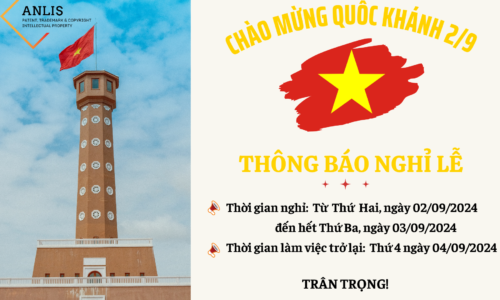How Copyright, Trademark and Patent differentiates
We encounter the terms copyright, trademarks, and patents everywhere in our daily life. For example, we see the words “© Copyrights” under each website when surfing the Internet, or hear the news that “Scientists have come up with inventions…”, or come across trademarks with the ® sign on the products’ packaging when shopping. So how are these signs different and legally protected. Below are some of the criteria to distinguish these objects.
Criteria
|
Copyright
|
Patent
|
Trademark
|
Representation forms
|
© and year of publish or name of copyright holder(s).
Ex: ©2020
|
Patent or “Pat.” and Certificate number of patent registration
Ex: Pat. 12546
|
® upon registration or “TM” (trademark) hay “SM” (service mark) prior to registration
|
Subject matters
|
Works covered by copyright laws
|
a technical solution in form of a product or a process which is intended to solve a problem by application of laws of nature. A patent could be a compound, a machine, a process or a combination of the above
|
Any signs or symbols to indicate the origin of goods
|
Protection criteria
|
Originality
|
– Being novel;
– Involving an inventive step;
– Being susceptible of industrial application.
|
Distinctiveness
|
Disclaiming elements
|
– a creation of the mind not in any mode or form of expression
– And subject matters not covered by copyright protection stipulated in Article 15 of the Intellectual Property Law including sews of the day as mere items of press information; legal documents, administrative documents and other documents in the judicial domain and official translations of these documents; and processes, systems, operation methods, concepts, principles and data
|
– Laws of nature, abstract notions.
– And subject matters not covered by patent protection stipulated in Article 59 of the Intellectual Property Law.
|
– Subject matters not covered by trademark protection stipulated in Article 73 of the Intellectual Property Law related to politics, religion
– Simple signs which are non-distinctive.
– Signs being descriptive of quality, origin, characteristics of products and services.
|
Bases for the emergence of intellectual property rights
|
Automatically emerged when a creation of the mind is in any mode or form of expression
|
File application with the IP Vietnam
|
File application with the IP Vietnam or actually use in the course of commerce
|
Protection duration
|
The moral rights are protected forever.
Economic rights are protected for the whole life of the author and for fifty years after his/her death.
(Article 26 Intellectual Property Law)
|
A patent is protected from the date of granting the protection certificate and lasts until the end of 20 years from the filing date.
|
Trademarks are protected for 10 years from the filing date and unlimited in the number of renewal. As such, a trademark can be protected permanently if being used and renewed continuously.
|
Scope of rights
|
Exclusive copying works
|
The right to use, prevent others from manufacturing products applying the registered patent for products or process
|
Using, preventing others from using identical or confusingly similar signs for identical or confusingly similar goods/services
|
International protection
|
Protected irrespective of form of expression in most countries (under Bern convention)
|
Register and grant protection in each country, or through a centralized mechanism such as PCT
|
Register and grant protection in each country, or through a centralized mechanism such as the Mandrid system.
|









